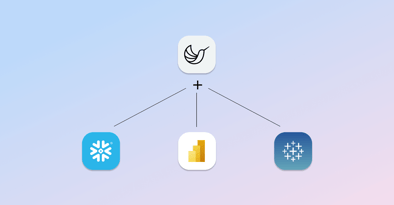Hummingbird for Lookback Reviews

Matt Van Buskirk
CEO & Co-Founder
Introduction
Let’s just say it – lookbacks are rough. During my career as a bank examiner and consultant, I was involved in my fair share of them. During the financial crisis, it often felt as if one lookback would wrap up, only for the next one to immediately begin. The work is grueling. For months at a time, dozens (or even hundreds) of reviewers sequester themselves in temporary office space in order to process a seemingly endless queue of alerts.
Double the work, half the resources
And if that wasn’t bad enough, lookbacks almost always fall outside of the course of normal compliance operations. This means that the existing systems, which have struggled to the point where a lookback has been deemed necessary, are now expected to handle both the normal flow of compliance cases…and the additional work required by the lookback. They simply can’t cope, and the inevitable result has always been the same: a cobbled-together collection of Excel-based sheets being transferred in batches to a basic tracking tool that (one hopes) will keep track of things.
Balancing the need for efficiency and accuracy
Working in this way, it’s fair to say that there’s as much work attached to a lookback’s oversight as there is in parsing the alerts themselves. Because a lookback is, in essence, a chance for financial institutions that have been given a stern warning an opportunity to make it right. The pressure to deliver a full and watertight report is immense, and managing the personnel and organizational costs is a delicate balancing act. In order to efficiently manage a lookback, consultancies will necessarily utilize a large pool of junior staff. This group will complete the level one reviews, and pass the results up to a smaller group of more senior staff for a second look. Finally, the project leads will step in for a final check. This is the process that allows a lookback to be completed in the most cost-effective manner.
But! There is a downside to this approach. Because every step of the lookback process is largely manual, the opportunity for human error remains high. I remember lookbacks where we spent almost as much time double-checking the results as we did doing the initial review. Cleaning and packaging the results is another huge time cost: one of the larger projects I worked on required my team of ten to work 18-hour days for a week simply to prepare the final report to be delivered to regulators.
Custom tools for compliance work
These were the experiences I carried with me into my current role as founder at Hummingbird, a centralized platform for compliance work. Hummingbird is designed to streamline anti-money laundering, fraud, customer due diligence, and other compliance workflows. From the outset, we designed Hummingbird to be modular, allowing it to ingest data from a variety of different sources and formats, and to integrate easily with common applications, such as KYC/KYB, EDD, or Business Intelligence tools.
I’ve often thought that Hummingbird would make a compelling tool for companies engaged in helping financial institutions satisfy the demands of a lookback.
In particular, there are a few Hummingbird features that I think would make an immediate difference:
Hummingbird for Lookbacks: A Selection of Features
Rapid Deployment
Hummingbird can stand up a review environment with customized workflows in as little as a day.
Automations
Your lookback workflow invariably involves a lot of manual taskwork. These actions (clicking, dragging, copying, pasting, etc.) are everywhere – in review work, in quality control testing, in generating status updates, in reaching out to other parties for additional information. Hummingbird's platform lets you create customizable automations to handle these repetitive tasks. Creating the automations is a simple and straightforward process, using an intuitive "recipe" builder. By removing that manual taskwork, these automations free analysts to focus on actual review work, where their time and skills are most valuable..
Data Interpreters
Lookbacks require the centralization of a huge amount of data. This data is always aggregated from multiple sources, in myriad formats, and is normally dropped into a shared drive somewhere. The first major time investment in a lookback is spent cleaning and sorting everything into review folders and creating workpaper templates. Hummingbird has created a superhighway for this information in the form of a data interpreter, which allows you to drag and drop data files into your case management platform and extract the right information (to the right places!) without copy-pasting individual fields. These data interpreters can be calibrated to specific formats in just hours, giving lookback teams huge time-savings from day one.
Global SAR Filing
For those lookbacks that involve SAR filing, Hummingbird uses patented SAR filing technology to run thousands of validation checks on each SAR filing. The result is a filing platform that is fast, error-free, and largely automated, allowing teams to safely and securely file to FIUs around the world.
Audit trail + Workpaper Generation
Auditability is another area where Hummingbird shines. Removing the need for manual tracking (such as who did what, at what time, etc.), these steps and their associated metadata are all captured automatically by the platform. Bonus: this also means that your workpapers are automatically generated! Hummingbird can handle data files of all sorts including PDFs, audio recordings, and video files – anything needing to be added to a case.
Reporting Feeds
Distilling months of work into organized reports for clients, regulators, or management teams is never fun. But they’re much less fun if your source materials are tens of thousands of Excel-based workpapers. Wouldn’t it be nicer if your reports could be auto-generated? Hummingbird has existing integrations with leading data and business intelligence platforms such as Tableau, Looker, PowerBI, and Snowflake. These integrations allow you to build custom reporting dashboards and monitor them in real-time. For those using other tools, our API integrations make connecting your systems to Hummingbird quick and easy.
Conclusion
For those that have experienced them, lookbacks have always felt like a marathon run at sprinting speed. The reason for this is that the tools used to complete a lookback were only ever capable of slowly chipping away at the great bulk of work involved. But new tools bring new opportunities, and I’m happy to say that Hummingbird has been making compliance work more efficient, more thoughtful, and more effective for teams around the globe. So if you have a major lookback project on the horizon, I encourage you to get in touch. We’d be happy to chat!
Stay Connected
Subscribe to receive new content from Hummingbird


